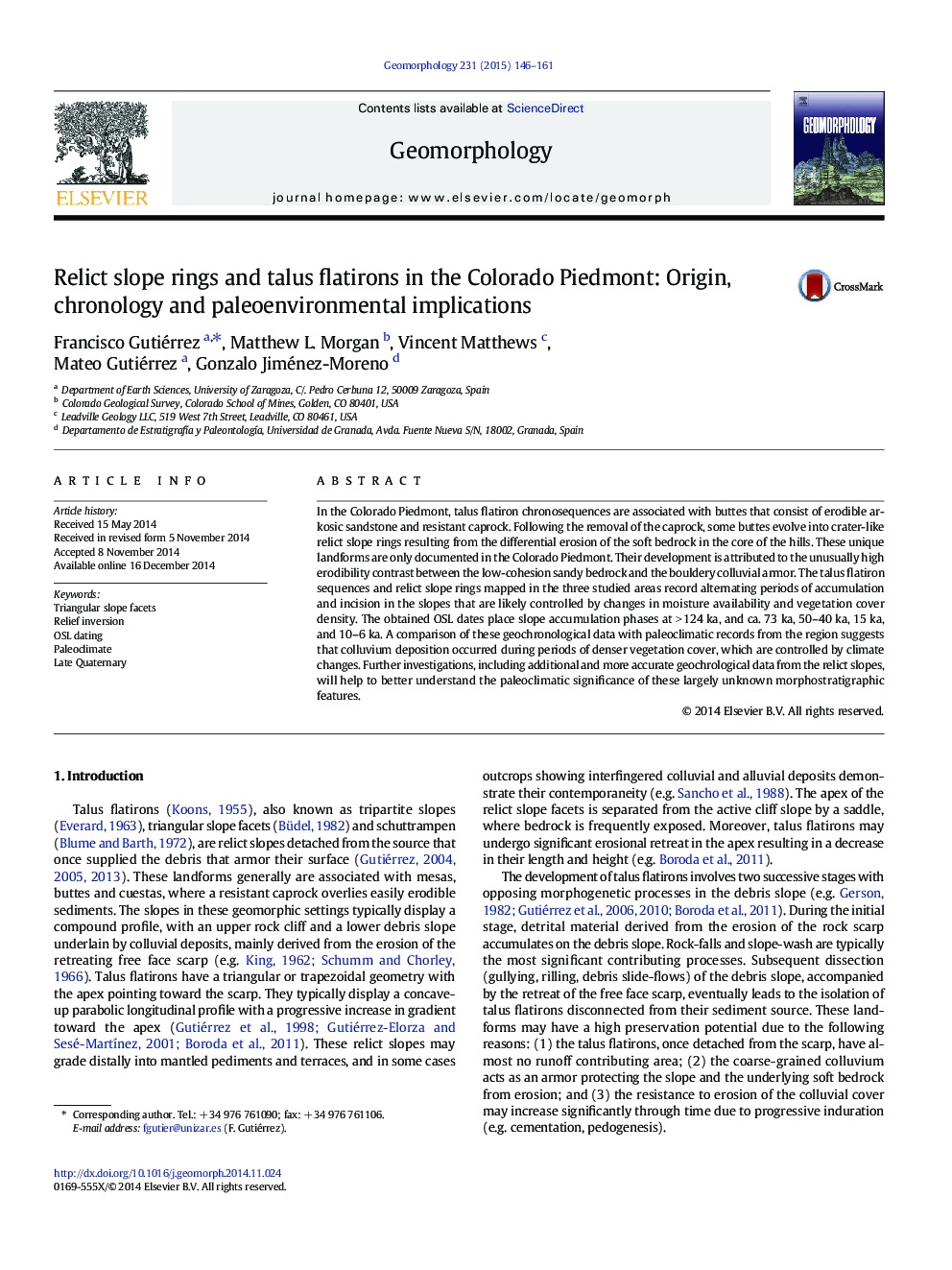| Article ID | Journal | Published Year | Pages | File Type |
|---|---|---|---|---|
| 4684326 | Geomorphology | 2015 | 16 Pages |
•Talus flatiron chronosequences in the Colorado Piedmont•Relict slope rings are unique landforms only documented in the Colorado Piedmont.•Relict slope sequences record climate-controlled aggradation–incision cycles.•Numerical dating of the relict slopes
In the Colorado Piedmont, talus flatiron chronosequences are associated with buttes that consist of erodible arkosic sandstone and resistant caprock. Following the removal of the caprock, some buttes evolve into crater-like relict slope rings resulting from the differential erosion of the soft bedrock in the core of the hills. These unique landforms are only documented in the Colorado Piedmont. Their development is attributed to the unusually high erodibility contrast between the low-cohesion sandy bedrock and the bouldery colluvial armor. The talus flatiron sequences and relict slope rings mapped in the three studied areas record alternating periods of accumulation and incision in the slopes that are likely controlled by changes in moisture availability and vegetation cover density. The obtained OSL dates place slope accumulation phases at > 124 ka, and ca. 73 ka, 50–40 ka, 15 ka, and 10–6 ka. A comparison of these geochronological data with paleoclimatic records from the region suggests that colluvium deposition occurred during periods of denser vegetation cover, which are controlled by climate changes. Further investigations, including additional and more accurate geochrological data from the relict slopes, will help to better understand the paleoclimatic significance of these largely unknown morphostratigraphic features.
